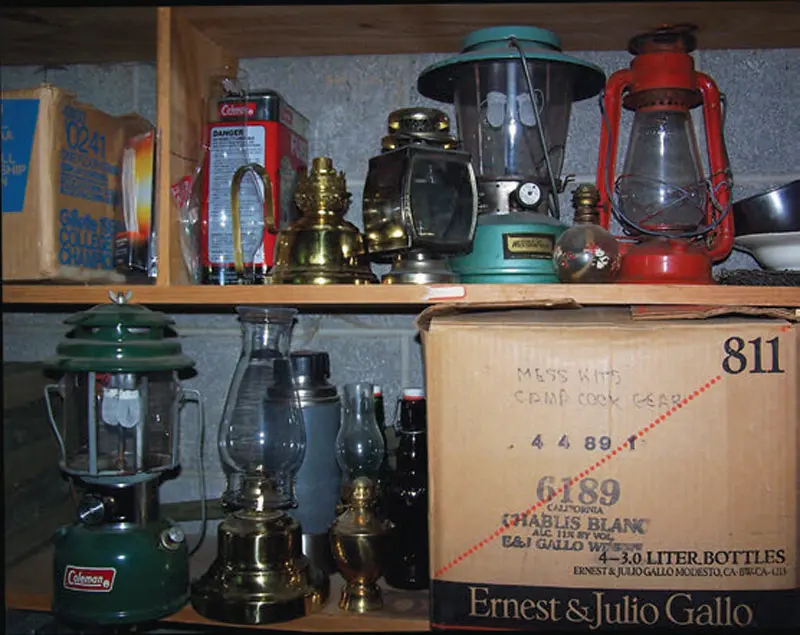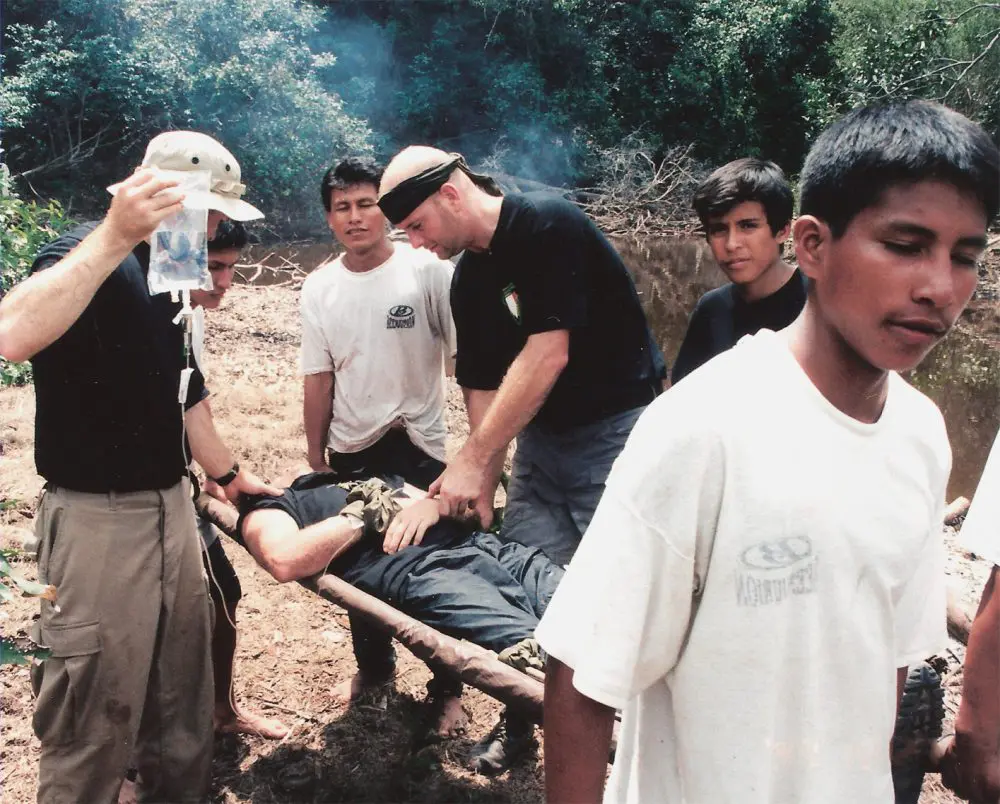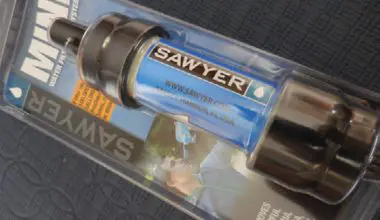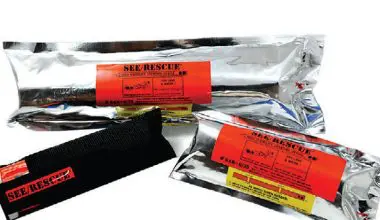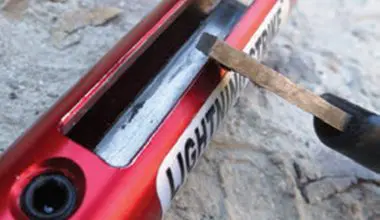There are thousands of years of proven simple methods available to us to make light in a wilderness or survival setting. We can use what is at hand like our ancient forebears if we have to, or we can prepare beforehand and make use of minimal-weight, efficient and cost-effective leading-edge technology. Like fire before it, efficient production of light has advanced to the point it can even be used as a defensive tool.
The measurement of light is an exact science. To spare the reader and writer alike, we’ll just make comparisons intended to help prepare food after the sun sets, or ensure we don’t fall in the latrine after dark, or even just get around the homestead during a power failure.
Today most everyday light is measured in lumens. A lumen can be thought of as a measure of the total amount of visible light emitted from some source. For instance, a typical household candle gives off about 13 lumens. Back in the old days, they called that one candlepower, a unit now standardized as the slightly stronger candela.
For the human eye, ordinary chores are facilitated by 15 lumens or so, but now there are handheld flashlights that deliver a stunning 1,300+ lumens to make anything that walks blinded like a deer in your headlights.
The familiar kerosene lamp or lantern, depending on its size, usually produces about 30 lumens and, believe it or not, worldwide consumption of kerosene to fuel them roughly matches the total U.S. consumption of jet fuel— some 77 billion liters a year.
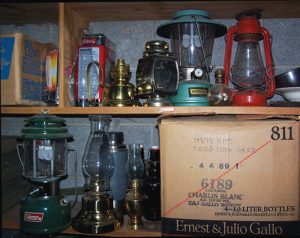
“Oh, I dunno….” “We got any matches?” “Oh, I dunno….”
We’ll use general terms and comparisons that we hope will be helpful to review what’s been used before and what’s available now. Then you can decide what will work best for your needs.
Table of Contents
EARLY METHODS: COUNTRY SIMPLE WITH WHAT YOU HAVE
Early flames for light came from burning pitch knots, fat wood or even oily “candle” fish. Fiber or absorbent torches were made from such things as cattails and soaked in oils and fats. These were scaled down to the classic Virgin’s Lamp, whose form went unchanged for centuries, comprising a wick sitting in oil, which would carry the oil upward and position it to mix with air and burn cleanly.
Candles further developed this idea, but used a solid such as beeswax or tallow, which was cast around a central wick. These devices both evolved into lamps and lanterns designed to protect the flame and make them burn more efficiently. The early lamps and candles were so simple, they can be readily improvised any time you have the materials: oil, a dish and wick or string to twist a wick, and wax to dip a candle.
INDUSTRIAL REVOLUTION MAKES IT UNIVERSAL
When candles were still the available norm, they were commonly protected in a lantern. The hobo and hillbilly “bug” was the flashlight of choice when I was a kid because you couldn’t get dry cells. It was just a candle stuck through the side of a tin can that protected it from wind and acted as a reflector.
The Argand lamp was a home-lighting lamp that ran on whale oil, and it reigned supreme until the kerosene lamp was developed, pretty much like we know them today. Kerosene lamps and lanterns were popular because of handy fuel with a good shelf life. Wick-type lamps have the lowest light output, and pressurized incandescent lamps have higher output. They range from 20 to 100 lumens depending on size and type.
The familiar Coleman® lantern took this country by storm, its incandescent light keeping rural Americans at work long into the night in the days before electricity came to those areas. Millions have seen military service and at remote construction and campsites.
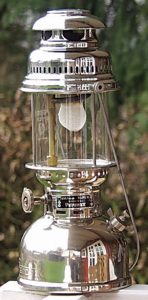
Flame lights work because part of the burning material is hot enough it gives off light. If you put something else in the flame’s path that will also be heated to the point of incandescence, it increases both the efficiency of the burning fuel and the amount of material that is giving off light.
This is the principle of Aladdin® kerosene lamps and Coleman® liquid-fuel lanterns. The Petromax® combines the best of both, now with multi-fuel capability. These need maintenance, and the incandescing mantles are fragile, but they have brought bright light to many a wilderness. The Aladdin and copies are now much safer, and the Coleman is available in propane. All flame lights can be an ignition source. Open flames such as candles and pool-type oil lamps will always be a fire hazard, so employ them judiciously.
ELECTRICITY MAKES IT EASY AND SAFER
The common incandescent light, as in the light bulb for a flashlight, auto headlamp or living room chandelier, works on the principle that resistance to electrical flow through the filament makes it get white-hot.
It’s served us in good stead for a century but isn’t very efficient, since most of the electrical energy used is wasted as heat. That’s fine if you’re hatching eggs under a light bulb, but less fine if you’re in the middle of nowhere and don’t have a pile of spare batteries or a means to recharge the ones you have. Filaments are fragile little wires, and bulbs are fragile little glass things. A light bulb, especially a halogen bulb, can get hot enough to start a fire.
Fluorescent lights work on the principle that high-voltage electricity passing through a gaseous medium excites it and it gives off light. These are the long tube lights usually seen in offices and hospitals. They are much more efficient at converting electricity to light than is an incandescent lamp, but I have never been a big fan for some uses because they actually turn on and off 60 times a second (50 in Europe) as the alternating power switches polarity.
This is not discernible to the eye, but in a setting with machines moving at the same speed, it
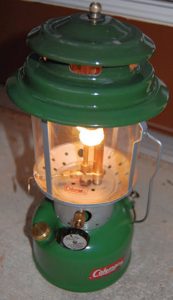
can create a strobe effect where something that is actually moving in sync looks like it is sitting still. Today, small replacement fluorescents are being pushed as replacements for the familiar incandescent bulb. They are beyond our interest here. A few decades back, fluorescent camp lights that were energy efficient were marketed, but in my experience gave mixed reliability. They are still available and have probably gotten more reliable.
LEDs AT THE LEADING EDGE
The light-emitting diode represents a breakthrough because it very efficiently converts storable electrical energy into light, whereas an incandescent bulb was terribly inefficient, wasting most of the electricity as heat. Also LEDs are not fragile like filament bulbs, and they are safer because they run cool and their useful life is essentially forever.
Combine these features with new long-shelf-life batteries and you can see why we think the LED is now the best game in town. In fact, they draw so little electricity that small solar or even handcrank chargers are practical to keep them operating. The small size of the LED and the small power source required make this a great combination for headlamps and similar wearable applications.
For emergency or outdoor applications, no flame light source can compete. Power fails? Flip the LED lantern switch and the area is lit. No finding, filling, spilling fuel, trimming wicks or replacing mantles. No finding matches, no fumes, no fire hazards. Flip the switch and it is light. With the new batteries that have several years of shelf life, LED lanterns are a hard act to beat for emergency lighting.
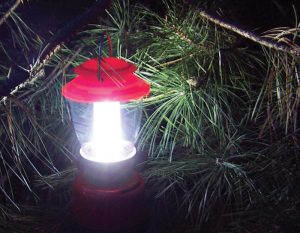
For cheap household emergency lights, it’s hard to beat the little solar patio lights. They cost a few bucks, and if you leave one on the front porch it’s always charged. If the lights go out, it goes on so you can find it and use it to find your Tier One light sources.
We recommend you get one or more of the little hand-crank chargers for LED flashlights and radios. They have indefinite shelf life, and a few seconds cranking gets you light. And they’re cheap. Next to .22 LR ammo, probably the best SHTF trade goods. Check out Radio Shack for rechargeable batteries for your LED lights and for solar chargers. There are even small LED flashlights that you simply shake for a few seconds to recharge. They never need batteries.
As a rough comparison, a typical LED lantern of up to 60 lumens, about like a five-candle candelabra, will run for up to 50 hours on four C-cells
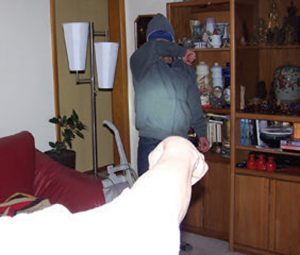
(which you can recharge or replace).
Emergency-ready LED lighting basically comes as area lamps or portable hand torches, some of which are so powerful they can be used for defensive purposes. Other types are the smaller, more precise units for close or discrete illumination or marking and signaling. There are many suppliers in both arenas, including reliable retailers.
My personal favorite suppliers, based on cost-to-capability and product reliability, are both companies I have dealt with for decades: Coast in Portland, Oregon and Nite Ize in Boulder, Colorado. Always compare capabilities and prices; these are the two outfits I always check first.
LIGHT FOR MOVEMENT, LIGHT AS A DEFENSIVE TOOL
From World War I on, strong carbon-arc lamps have been used to blind enemy bombardiers or ID aerial targets for AA gunners.
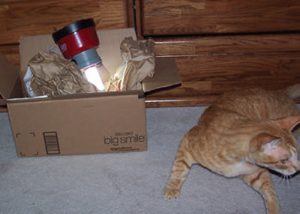
Today, powerful LED flashlights are capable of temporarily disorienting an aggressive man or beast with an incredibly bright light and/or confusing strobe effect. These can turn a drunk or doped gorilla into a blind and stumbling fool, while you escape or engage in other defensive activities.
These new LED hand torches won’t exactly peel the bark off a tree, but those with the output of the Coast HP17 and especially the HP17TAC strobe will be useful around camp to deter wildlife (while you load your politically correct double-barrel shotgun).
The HP17’s numbing 600+ lumen output trumps any compactness considerations. In a disaster scenario, something that runs on batteries you get at the gas station will beat the 123s you can’t get, especially with all the rechargeable standard batteries available. The HP17’s low setting of a still-bright 65 lumens runs 15+ hours on three D-cells, focuses, and instantly switches from low to high to strobe. It gets my “best buy” vote to replace any you have of similar dimension—but be sure all users are counseled not to shine it at friendlies.
Poor visibility can be a serious handicap no matter what the endeavor. Lack of light can turn simple nighttime activities into dangerous pursuits, but the danger of darkness is one safety consideration that it is perfectly OK to make light of.
